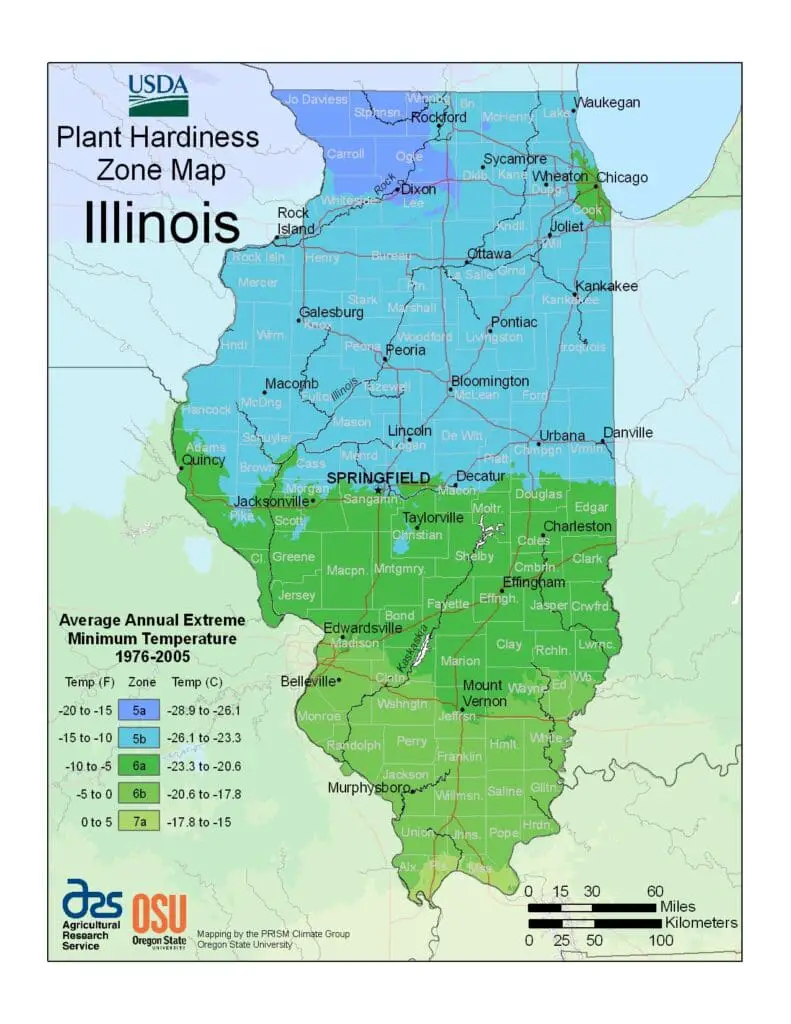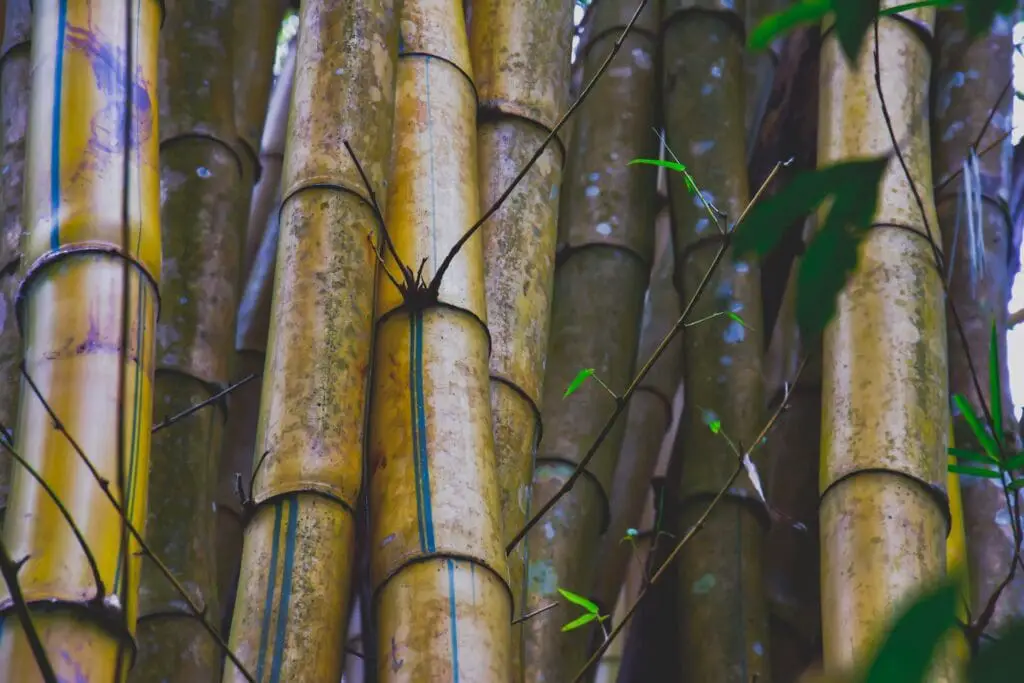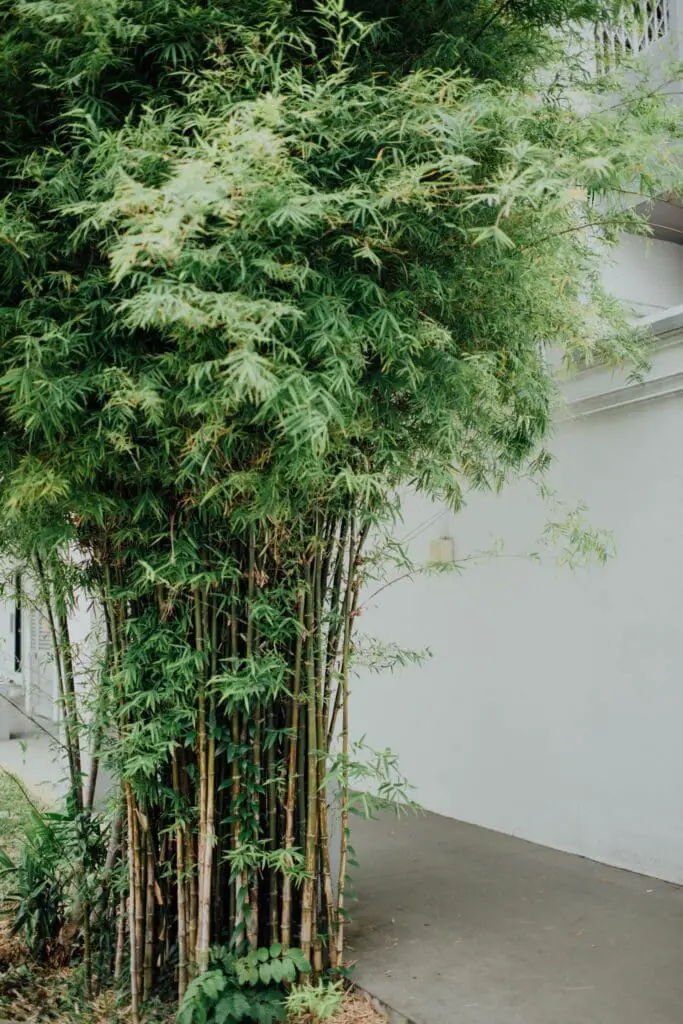Bamboo, a plant typically associated with subtropical and tropical climates, has the ability to grow in Illinois despite its challenging climate. The suitability of bamboo species for this region is determined by the USDA plant hardiness zones, which range from Zone 5a to a small part of Zone 7a in Illinois.
Key Takeaways
- Bamboo is not a tree but a type of grass with over 1,400 species.
- Bamboo can be grown in Illinois, and the USDA plant hardiness zone determines which species can grow in the area.
- Running bamboo is the fastest-growing plant and can become invasive, while clumping bamboo is more manageable.
- Fargesia bamboo varieties, such as Fargesia rufa, Fargesia denudata, and Fargesia scabrida, are cold-hardy clumpers suitable for Illinois.
Can Bamboo Grow in Illinois?
Bamboo can indeed grow in Illinois, where cold-hardy clumping varieties like Fargesia rufa, Fargesia denudata, and Fargesia scabrida are recommended options.
There are several benefits of growing bamboo in Illinois. Firstly, bamboo’s fast growth rate makes it an excellent choice for creating privacy screens or windbreaks. Additionally, bamboo’s versatility in landscaping allows for various uses such as erosion control and ornamental features.

When growing bamboo in colder climates like Illinois, there are a few tips to keep in mind. Planting bamboo in well-drained soil with plenty of organic matter and providing adequate water during dry periods is crucial for success. In areas prone to freezing temperatures, mulching around the base of the plants can help protect them during winter months.
Running vs Clumping Bamboo
When considering the choice between running and clumping bamboo, it is important to weigh the potential invasive nature of running bamboo against the more manageable growth habit of clumping bamboo.
Running bamboo is known for its rapid growth rate, making it the fastest-growing plant. However, this fast growth can lead to invasiveness if not properly contained. Invasive running bamboo can quickly spread and take over an area, leading to cultivation bans in some regions. To prevent this, in-ground barriers are necessary to contain its growth.
On the other hand, clumping bamboo grows more slowly and stays in a compact clump form. This makes it easier to control and maintain within a specific area.
Therefore, while running bamboo may offer faster growth, its invasiveness requires careful containment methods, whereas clumping bamboo provides a more manageable growth habit with less risk of spreading uncontrollably.
Invasive Potential
Invasive running bamboo poses a significant threat to the delicate balance of native ecosystems. Its rapid growth and spreading nature can quickly overwhelm and outcompete native plant species, resulting in the loss of biodiversity and habitat degradation.
To manage the growth of running bamboo and prevent its invasion, various control methods can be employed. These include installing in-ground barriers to contain the rhizomes that allow bamboo to spread, regular pruning to control its height and density, and implementing strict monitoring and maintenance practices.
It is crucial to address the issue promptly because once established, running bamboo can be challenging to eradicate completely. The ecological impact of bamboo invasion extends beyond displacing native species. It also disrupts natural food chains, alters soil composition, hinders water flow in streams, and reduces sunlight availability for understory plants.
Recommended Bamboo Varieties
Among the recommended bamboo varieties for cultivation in suitable climates, Fargesia rufa stands out as a compact and sturdy clumping bamboo species with strong stems.
This particular variety is well-suited for Illinois bamboo cultivation due to its cold hardy nature. Fargesia rufa can withstand the harsh winters of Zone 5, which includes central Illinois. Its ability to maintain its strength and vibrant green color throughout the winter months makes it a desirable choice for landscaping purposes.
Additionally, Fargesia bamboo varieties are known for their non-invasive growth habits, making them more manageable compared to running bamboos. By choosing Fargesia rufa or other cold hardy options within the Fargesia genus, individuals in Illinois can enjoy the beauty and benefits of bamboo without worrying about its potential invasiveness.
Native Bamboo Species
The giant cane (Arundinaria gigantea) is Illinois’ only native species of bamboo and plays a vital role in supporting diverse plant and animal species within the state’s ecosystems.
This evergreen bamboo has tall, spindly green stems that are segmented and hollow. The leaves occur in tufts near the top of each stem, while the lower stems become bare with age, revealing bamboo-like shoots.
Giant cane primarily spreads through rhizomes or roots that send up shoots, allowing it to form dense stands called canebrakes. These cane patches provide excellent bank stabilization due to their extensive root system. In addition to stabilizing soil, they support rare species such as Swainson’s warbler and timber rattlesnake.



Researchers at Southern Illinois University have extensively studied giant cane for its conservation value and established a bamboo nursery in 2008 to study propagation methods and promote conservation efforts further.
Conservation Value
The extensive root system of giant cane provides vital bank stabilization, making it a valuable asset in the conservation efforts of southern Illinois. Its dense and interconnected rhizomes help prevent erosion and maintain the integrity of riverbanks and floodplains.
Giant cane’s ability to stabilize soil is particularly important in areas prone to flooding, as it helps to reduce sedimentation and protect water quality.
Conservation methods for giant cane have been studied extensively by researchers at Southern Illinois University. Their findings have led to the establishment of a giant cane nursery in 2008, aimed at studying propagation methods and promoting conservation.
Through this nursery, scientists have been able to propagate new plants from existing populations, ensuring the continued survival of this important species.
The conservation value of giant cane lies in its ability to provide crucial bank stabilization through its extensive root system. Research findings have contributed to the development of nursery propagation methods that aid in conserving this unique species.
Frequently Asked Questions
Q: Can I grow bamboo in Illinois?
A: Yes, you can grow bamboo in Illinois.
Q: What varieties of bamboo grow well in the state?
A: There are several varieties of bamboo that grow well in Illinois, including Phyllostachys and Fargesia species.
Q: What is the best time to plant bamboo?
A: The best time to plant bamboo in Illinois is in the early spring or late fall.
Q: Can bamboo survive harsh winter conditions?
A: Yes, bamboo can survive harsh winter conditions in Illinois. However, it may suffer some damage if the temperatures drop too low.
Q: Does bamboo need a lot of sunlight to grow?
A: Yes, bamboo thrives in full sun, so it is important to choose a location for planting that receives plenty of sunlight.
Q: Can bamboo be planted in the shade?
A: While bamboo grows best in full sun, some varieties can tolerate partial shade. However, they may not grow as vigorously as those planted in full sun.
Q: Can bamboo be a pest in my garden?
A: Bamboo can be an expansive plant if not properly contained, so it is important to choose a clumping variety and regularly prune and maintain it to prevent it from spreading beyond your desired area.
Q: Is bamboo a good option for landscaping in Illinois?
A: Yes, bamboo can be a great addition to your landscaping in Illinois. Its tall and graceful culms provide a unique and exotic look to any garden or property.
Q: How do I fertilize bamboo?
A: Bamboo should be fertilized with a balanced fertilizer in the spring and summer to promote healthy growth. Follow the instructions on the fertilizer packaging for best results.
Conclusion
In conclusion, bamboo can indeed grow in Illinois, although the suitability of different species depends on the USDA plant hardiness zone.
Clumping bamboo varieties, such as Fargesia rufa and Fargesia denudata, are recommended for Illinois landscapes due to their cold-hardiness and manageable growth.

